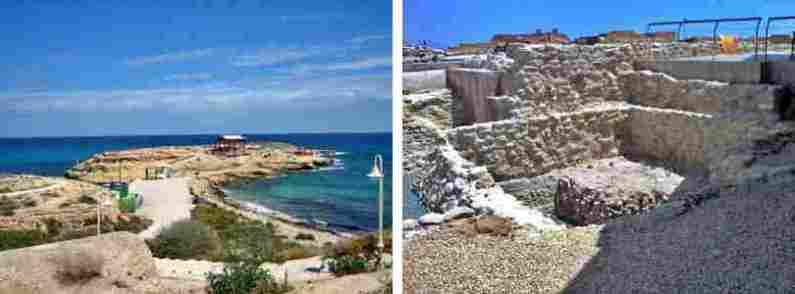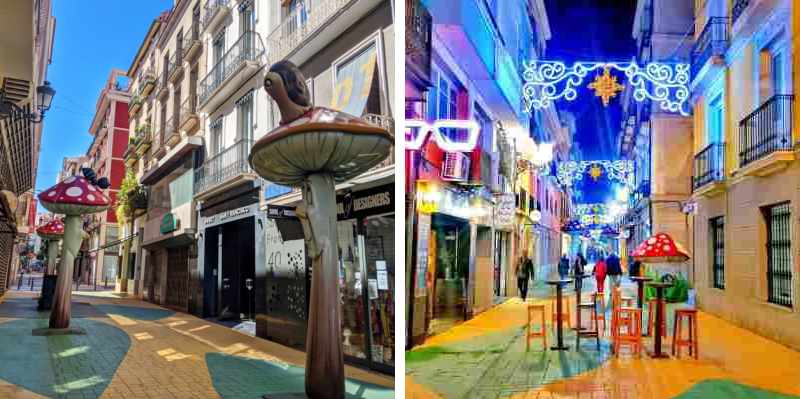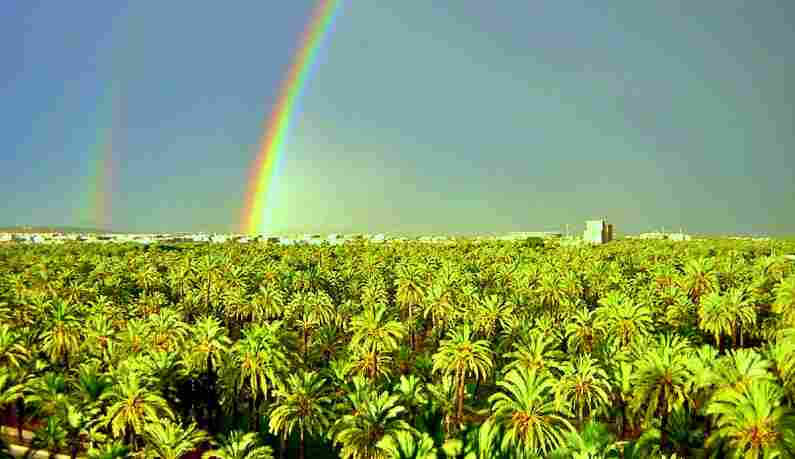|

Travel
Guide - Home - Valencian Community
The Costa Blanca (White Coast) lines the Mediterranean coast of Alicante Province in the Valencian Community of Spain. Running from Denia and the Costa del Azahar (Orange Blossom Coast) in the north, to Pilar de la Horadada in the South, the 200 km coast is popular for beach holidays. However, there are many less usual attractions along the coast and inland from the Costa Blanca. Here we explore a Moorish Queen’s bath, a Roman town, a fascinating museum, a street of mushrooms and a startling pink lake.
1. Illeta dels Banyets, El Campello

Images: Wikimedia Commons
El Campello is a great spot to stop over on a luxurious holiday in Spain. The town has many charms, but it also has plenty of history. According to local legend, Illeta dels Banyets was once the bathing site of a Moorish queen, who reclined on carved thrones, letting the waves wash over her.
However, while this sounds wonderfully romantic, the baths were actually the holding tanks of a Roman fish factory. The stock ponds were built by the Romans to capture and hold fresh fish from the sea and can still be seen clearly today, despite some erosion. However, besides the Roman remains there are also signs of the Neolithic, Iberian, Bronze Age and Moorish periods of Alicante’s history. Meanwhile, divers can take advantage of a snorkeling trail around the peninsula that takes them to the fish farm from the seaward side.
2. Archaeological Museum of Alicante (MARQ)

Images Wikimedia Commons
Alicante and the surrounding area has a complicated history and a small museum set under the magnificent Santa Barbara Castle in the city, named the “first archaeological museum of the 21st century.” The building was formerly the Hospital of San Juan de Dios, but now houses prehistoric treasures, artifacts from the Iberian, Roman and Medieval days, along with relatively modern artifacts from the area.
The Archaeological Museum of Alicante offers displays neatly combine modern and traditional techniques for its displays. There are five separate galleries, with glass cases, along with fascinating projection techniques, including a few holograms. Likely the most fascinating exhibit is the Tresor de la Marina Alta. The treasure includes gold jewellery from either Iberian or Roman days that were discovered walled up in a site named Pic De L’Aguila. For fans of Roman artifacts, there’s even a recreated Roman ship on display (pictured above).
3. Calle de las Setas (Mushroom Street), Alicante

Images @ourspanishadventures /
@pilar_m.1210/Instagram
Back in 2013, a section of Alicante’s San Francisco Street was turned into a representation of a yellow brick road, with toadstool houses and towering mushroom sculptures. The local council aimed to rejuvenate the street to help the businesses in the area during an economic downturn and hired artist Sergio Martinez to create the statues.
These days the street is a perfect place to stroll and take Instagram selfies before heading into one of the street’s many bars for a refreshing drink. The image on the right (above) shows how beautiful the Calle de las Setas looks during the Christmas holidays.
4. Palmeral de Elche (Elx), Spain

Image Wikimedia Commons
Originally planted in the 5th century BC by the Carthaginians, the Palmeral de Elche is home for more than 70,000 date palms. It is considered to be one of the largest of its kind in the world and is divided into around 100 individual orchards where visitors can enjoy a stroll in the shade.
The current layout of the Palmeral was created when the Moors controlled the city between the 7th and 10th centuries. The date palms are still planted in the same neat rows, following the lines of the ancient irrigation canals, which are amazingly still in good working order.
5. The Pink Lake of Torrevieja (Salinas de Torrevieja)

Image Alberto Casanova/Flickr
Torrevieja, a small seaside city on the Costa Blanca, is home to two colourful salt lakes. Together, they form a nature reserve dubbed Las Salinas de Torrevieja, but one lake really stands out. Unlike its green-tinted neighbor, this lake is a bright, bubblegum pink colour. While the lake is a funky colour, the water is perfectly fine, if a little smelly. It gets its charming pink hue from halobacterium (also known as “salt bacterium”) that thrive in salty places, along with a micro algae called Dunaliella salina.
The salt lakes are important to Torrevieja, as people have been collecting salt from the waters for centuries. In fact, in the early 19th century, this became a hub for Spain’s salt industry. These days, the lakes also act as a natural spa. Apparently, the mud and salt at the bottom have healing properties to relieve common skin and respiratory ailments. Meanwhile, rather like the Dead Sea of Israel, this is also a fun place to relax and enjoy floating on the water.
Explore the Costa Blanca on your next visit to Spain, taking in not only the gorgeous Mediterranean beaches, but all the fascinating and historic sites along the coast.
Travel
Guide - Home - Valencian Community
Top
|



